The careful use of natural resources and awareness of our environment are becoming increasingly urgent. A sustainable lifestyle benefits our environment and therefore future generations. As the heart of our personal living space, our kitchen offers a lot of space and several options for eco-safe and environmentally friendly design. However, sustainability in the kitchen does not just mean using environmentally friendly kitchen gadgets and energy-saving methods. There are a few other aspects that play an important role in designing a eco-safe kitchen. You can find out what these are and what you can specifically do to bring durability into your kitchen in the 10 tips below.

Table of Contents
Why sustainability can make a big difference in the kitchen?
The kitchen table and counter are often the focal point of our home. We spend a lot of time here. We eat, cook, do homework, read the newspaper, play, do crafts, celebrate and spend a lot of time together. Our kitchen is a place where people live – and unfortunately also consume or waste a lot.
Cooking creates a lot of waste and often uses a lot of water, electricity and synthetic. In order to reduce the high environmental impact and conserve valuable resources, the topic of durability in the kitchen is becoming increasingly important.
If you design your kitchen sustainably
- Automatically reduce your ecological footprint,
- Save money by taking a few simple steps
- You can use the valuable time you save for other things
- And feel good because you have made our planet a little bit better.
Durability starts in the kitchen. The following 10 tips will help you make your kitchen more environmentally friendly and resource-efficient.
Tip 1: Use local and seasonal ingredients
Fresh fruit and vegetables from the region are highly recommended for a healthy and sustainable diet.
The shorter the distance the food travels, the better for the environment. This means that there are fewer transport costs for regional products and less packaging is required. Complex production, disposal and the issue of recycling packaging can be avoided. On the one hand, this protects the environment. On the other hand, regional products usually have a significantly better CO2 balance.
When it comes to taste, regional and seasonal vegetables often score better. This is because the products from the region can fully mature and do not have to go on a long journey unripe. This means that ripe and deliciously tasting foods end up in your refrigerator or kitchen compartment instead of hard and less flavorful versions.
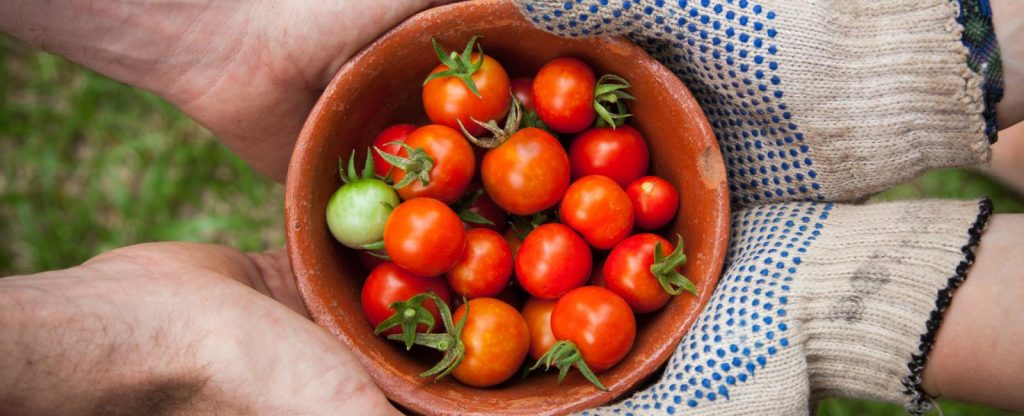
Tip 2: Avoid waste through targeted planning and storage
Directly linked to the topic of durability is avoiding waste. It’s best to only buy what you can actually store in order to avoid unnecessary disposal. Targeted shopping and menu planning and maintaining a shopping list will help you only buy what you will then fully utilize.
And if there is something left over, the internet offers numerous recipe ideas to use up the remaining food. Also keep in mind that some items can be used long after their expiration date. Judge them less by the expiry date and more by their appearance and smell.
How you store your food also plays an important role. Instead, replace cling film and aluminum foil with a lunch box or glass container. These can be washed out and reused.
The issue of organic waste is also an important aspect of eco-safe cuisine: Some people pack their organic waste in synthetic bags and then throw them into the container. A fatal decision, because the fact is that they cannot rot and have to be pulled out in the composting plant. It’s better to switch to paper bags or, ideally, dispose of your compost freely.

Tip 3: Choose sustainable kitchen utensils
Sustainable kitchen utensils are utensils that are made from environmentally friendly materials and are designed to be durable and produce as little waste as possible.
The following materials are particularly suitable for eco-safe kitchen utensils:
- Wood
- Bamboo
- stainless steel
- Vote
- Beeswax
- Silicone
By using eco-safe kitchenware, you can help reduce waste and protect the environment.
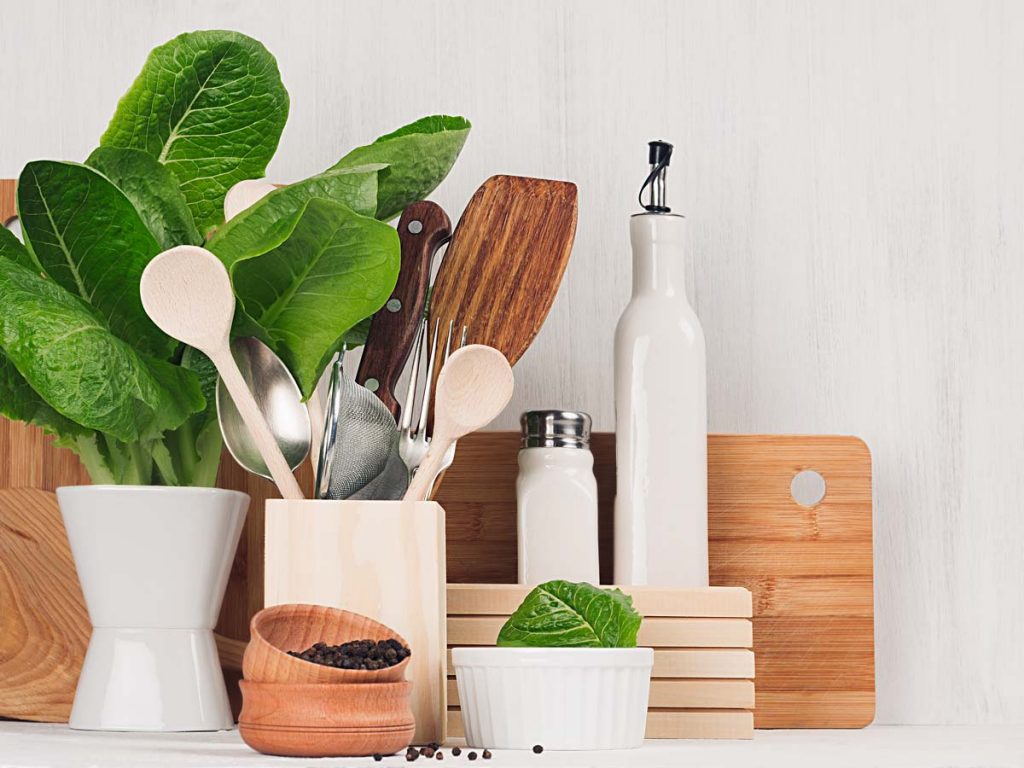
Tip 4: Use energy-saving devices and renewable energy sources
A sustainable kitchen should be designed to use as little energy as possible and use renewable energy sources to meet energy needs. Here are some ways you can make your kitchen more energy efficient:
- Energy-saving appliances : Use energy-saving devices such as induction cookers, high energy efficiency refrigerators and freezers, and water-efficient dishwashers to reduce energy consumption in the kitchen.
- Renewable energy sources : Use renewable energy sources such as solar energy or wind energy to power your kitchen. Install solar panels on the roof of your home or purchase green electricity from a provider that uses renewable energy sources.
- LED lighting : Use energy-efficient LED lights in your kitchen to reduce electricity consumption.
- Insulation : Make sure your kitchen is well insulated to reduce energy consumption for heating and cooling.
- Cooking habits : Use cooking methods that use little energy, such as steaming or cooking on a low heat.
- Composting : Compost organic waste from the kitchen to reduce waste and fertilize your garden or plants. By using energy-saving devices and renewable energy sources and practicing eco-friendly cooking, you can make your kitchen more energy efficient and environmentally friendly.
- Indicators of environmentally friendly kitchen gadgets: High energy efficiency classes A and Blongevity Eco-Programme Recyclable materials Efficient insulation Smart control and control via app Production runs on green electricity

Tip 5: Use ecologically degradable cleaning products
Eco-safe kitchens should also be cleaned with eco-degradable cleaning products to reduce environmental impact. Here are some examples of eco-degradable cleaning products:
- Vinegar is an effective cleaning agent that can be used in many areas of the kitchen. Mix vinegar with water and use it as an all-purpose cleaner or as a window and mirror cleaner.
- Lemon juice is a natural bleaching agent and can be used to remove stains and discoloration. Mix lemon juice with water and use it as a kitchen countertop cleaner or as an odor neutralizer.
- Baking soda can be used as an abrasive to remove greasy deposits or crusts. Mix baking soda with water and use it as an oven cleaner or as a scouring agent for pots and pans.
- Baking soda can be used as an odor neutralizer and can help remove odors from the kitchen. Sprinkle some baking soda at the bottom of the refrigerator or trash can to eliminate unpleasant odors.
- Essential oils can be used as fragrances to create a pleasant atmosphere in the kitchen. Add a few drops of essential oil to your homemade cleaning product to create a fresh scent.
- Organic cleaning products : There are also special organic cleaning products on the market that are made from natural ingredients and are biodegradable. When purchasing cleaning products, pay attention to the ingredients and choose products that are environmentally friendly.

Tip 6: Avoid plastic packaging and containers
An eco-friendly kitchen should avoid plastic to reduce environmental impact. It’s best to avoid plastic containers altogether and prioritize stainless steel and glass containers for taking or storing food. Such containers are durable and can be used over and over again. Reusable cloth bags are also an excellent way to avoid plastic bags. You can also use recyclable mesh bags to store fruits and vegetables. Beeswax wraps are great for wrapping or covering food instead of using plastic or aluminum foil. They are recyclable, biodegradable and therefore an excellent and eco-safe replacement. Use less single-use plastic bottles and use recyclable glass or stainless steel bottles instead. There are also reusable water bottles made from BPA-free plastic on the market.
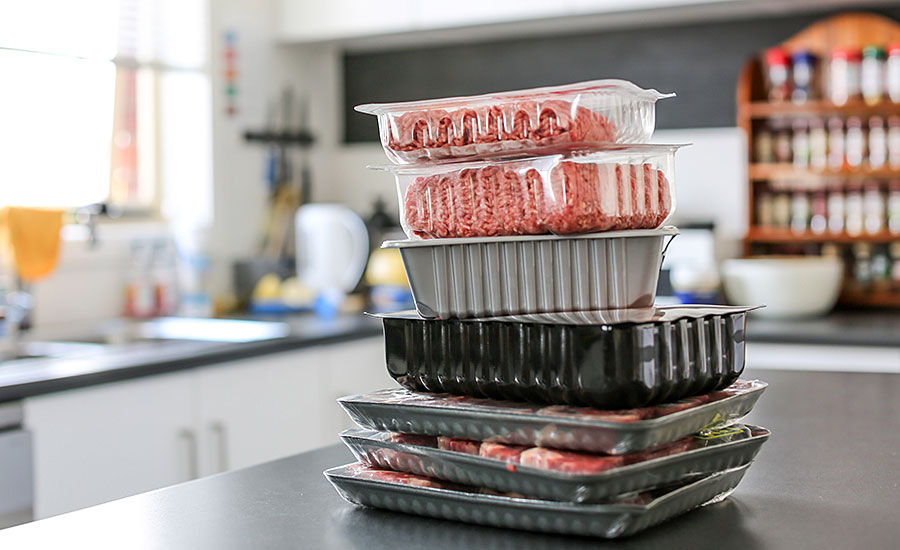
Tip 7: Save water when cooking and washing dishes
Water is a valuable resource that we use, among other things, for preparing food and cleaning in the kitchen. You can save water in your kitchen with the following 5 tips:
- Use the dishwasher: A dishwasher can be more efficient than washing dishes manually and can save water.Use a water-saving faucet: A water-saving faucet can reduce water consumption by up to 50 percent.Avoid unnecessary rinsing: Only rinse when absolutely necessary and avoid unnecessary rinsing.Use a bucket to rinse: Use a bucket to collect the rinse water instead of letting the water run. The collected water can be reused for other purposes.
- Always use a lid when cooking: A lid on the pot or pan can help reduce water consumption when cooking.
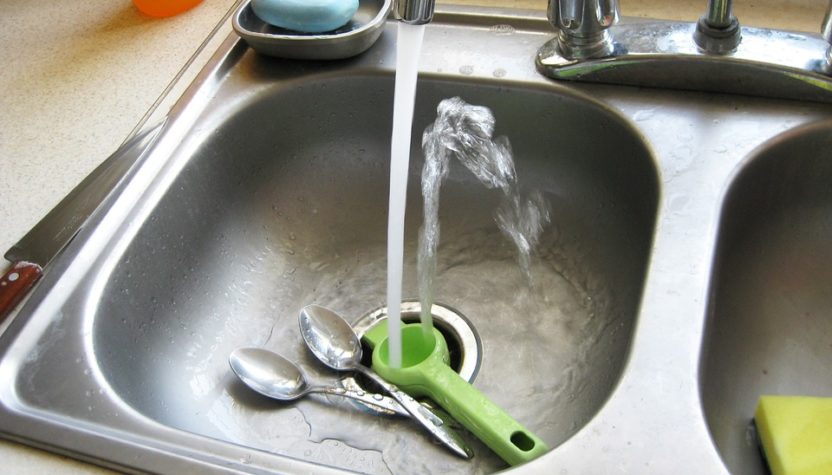
Tip 8: Create a herb garden in the kitchen or on the balcony
Having your own herb garden on the balcony or in the kitchen not only has the advantage that you always have your favorite herbs to hand and thus save costs. The herbs you plant yourself usually taste much more intense and are free of pesticides and other substances and are therefore often healthier.Having your own herb garden can also help reduce environmental impact, as no packaging, transport or chemical substances are required to store the herbs.Overall, having your own herb garden offers many advantages, from freshness and health to durability, versatility and relaxation when planting. It’s a great way to enrich your earth-friendly cuisine and connect with nature.
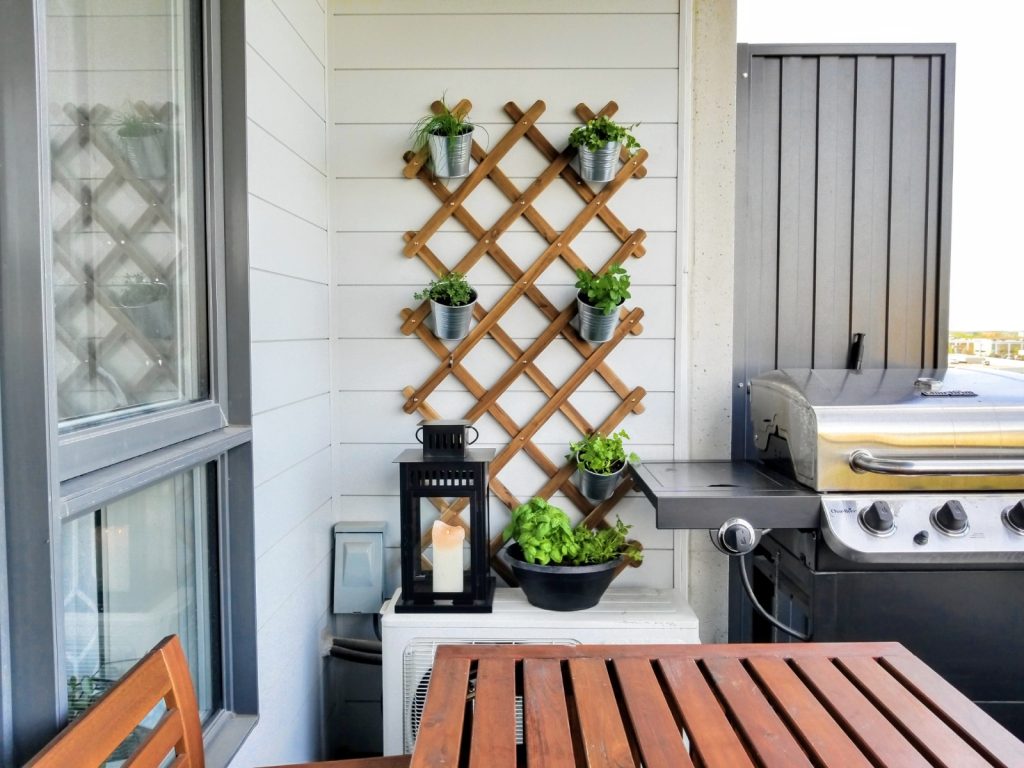
Tip 9: Choose sustainable kitchen furniture and kitchen designs
Eco-friendly kitchen furniture is usually made from environmentally friendly materials that require less energy and resources. This reduces environmental impact and minimizes the carbon footprint.They are typically free of pollutants such as formaldehyde, VOCs (volatile organic compounds), and other harmful chemicals. In this way, they can help improve the quality of indoor air and create a healthier living environment.Earth-friendly kitchen furniture is also often made from high-quality materials that last longer and are less susceptible to damage or wear. This reduces the need to replace furniture frequently, which in turn reduces the environmental impact. Additionally, eco-safe kitchen furniture is often offered in attractive designs and styles that are both functional and aesthetically pleasing. They are therefore a good way to combine environmentally friendly and attractive furniture. Eco-safe kitchen furniture is definitely a sensible choice that can help reduce environmental impact, create healthier living conditions, increase longevity and also provide stylish and attractive furniture.

The topic of sustainability begins in your own kitchen
Durability in the kitchen is an important topic that encompasses many aspects. A earth-friendly kitchen can help reduce the ecological footprint, conserve resources and minimize environmental impact.
Eco-safe cuisine includes, among other things
- the use of energy-saving devices,
- the use of renewable energy sources,
- avoiding plastic
- and the use of biodegradable cleaning products.
Growing your own herbs and vegetables and purchasing regional and seasonal products also contribute to durability in the kitchen. There are some environmentally conscious companies in Europe that are committed to durability and social responsibility and offer products and services that reduce environmental impact and improve quality of life.
Every individual can contribute to creating a earth-friendly kitchen and thus having a positive impact on the environment and the future.
Simple ideas for sustainable kitchen furnishings
If you want to furnish your kitchen sustainably, you should generally choose high-quality products made from natural materials. Wood is always a good choice, especially if it comes from sustainably managed and local forests. It starts with the kitchen itself and only ends with the wooden spoon. Electrical devices also play an important role in durability because they should have as long a lifespan as possible and consume little energy. The easiest and safest way to buy earth-friendly wooden furniture is to purchase it from a trusted carpenter. But more and more larger furniture retailers and online shops are also offering eco-safe product lines that can be identified by appropriate seals.
1. Create a sustainable basis in the kitchen
From the kitchen front to the worktop to the dining table – almost every piece of kitchen furniture is now available in an ecologically correct manner. Anyone who wants to invest in truly earth-friendly kitchen furnishings should first rely on an appropriate basis and a kitchen made from sustainable production. Although such kitchens, with prices starting at around 1000 euros for a small kitchen unit, are often a little more expensive than conventional versions, they are made of higher quality materials and have a significantly longer life expectancy.
2. Rely on high-quality accessories
Not only the kitchen itself, but also the accessories should be replaced with high-quality and sustainable elements. Cheap cooking pots, spoons, etc. usually don’t last half as long and are significantly less fun to use than higher quality models. In addition, the risk of chemicals that are harmful to the environment and health getting into the food is much lower. Many furniture retailers now have a large range of earth-friendly kitchen utensils, for example made from olive wood, which are not only particularly durable but also attractive.
3. Use glass or metal storage containers
Luckily, eco-safe kitchen utensils no longer have anything to do with typical eco-looks. On the contrary, many manufacturers focus on eco-safe products with a hip design. These include long-lasting storage containers made of glass or metal, which, when placed on shelves in the kitchen, become a stylish decorative object. Whether onions and potatoes or cereal and biscuits – this is how food is stored practically. In order to produce as little waste as possible, you should ideally buy them in unpackaged shops and bring your own cans and containers. This saves resources and protects the environment at the same time.
4. Rent kitchen appliances
What hardly anyone knows: Instead of buying kitchen gadgets, you can easily rent them! This is particularly worthwhile for devices that are rarely used, such as an ice cream maker or a deep fryer. Another sustainable alternative is to invest in high-quality equipment together with friends or family members who live nearby. These can then simply be passed on as needed. This not only saves money, but also resources.
5. Buy energy-efficient kitchen appliances
Nowadays, you can also consciously choose more sustainable models when purchasing kitchen gadgets. But there are a few things to consider, especially energy efficiency. This can be estimated using the printed energy label. Be it a dishwasher, stove or refrigerator – every appliance in Germany now comes with such a label. The highest efficiency class is marked A+++. But even with A++ and A+ you can still save a lot of electricity. If, in addition to the energy efficiency class, the materials and workmanship are also right and the products are recyclable, your own kitchen becomes a lot more earth-friendly.
6. Use ecological cleaning products
The kitchen is one of the rooms that is naturally cleaned the most often. Dishwashing liquids and cleaners are used here every day, but unfortunately they are not always good for the environment. Therefore, you should also make sure that the cleaning products do not consist of harmful chemicals. Fortunately, the selection of sustainable cleaners for work surfaces, cooking pots and dishes is constantly growing and dishwasher tablets are now also available as a earth-friendly alternative. Home remedies such as citric acid or soda also help keep the kitchen clean and do not pollute the environment.
7. Pay attention to sustainability seals
Just like with organic food in the supermarket, there are also corresponding seals for furniture, home textiles and kitchen accessories, which attest to the fairness and durability of the product. When producing such a certified piece of furniture, care is taken to conserve natural resources and, if possible, not to harm the environment and nature. The most widely used environmental seals for electrical appliances and interior design are the “EU energy label”, the “Blue Angel” and the “FSC” or “PEFC seal”.
FAQs
Q: What are some easy ways to create a sustainable kitchen?
A: Some easy ways to create a sustainable kitchen include using eco-friendly cleaning products, investing in energy-efficient appliances, and opting for sustainable materials such as recycled glass and wood for cabinetry.
Q: How can I reduce food waste in my kitchen?
A: You can reduce food waste in your kitchen by using reusable food storage containers, planning meals to use up leftovers, and composting food scraps to minimize landfill waste.
Q: What are some eco-friendly products I can use in my kitchen?
A: You can use eco-friendly products such as biodegradable kitchen cleaning supplies, energy-efficient appliances, and eco-friendly storage containers made of sustainable materials.
Q: Why should I invest in energy-efficient appliances for my kitchen?
A: Investing in energy-efficient appliances for your kitchen not only helps reduce your environmental impact but also saves you money on energy bills in the long run.
Q: How can I make my kitchen more sustainable?
A: You can make your kitchen more sustainable by incorporating eco-friendly practices, using biodegradable and compostable materials, and reducing the use of single-use plastics and non-recyclable products.
Q: What are some sustainable changes I can make in my kitchen?
A: Some sustainable changes you can make in your kitchen include switching to eco-friendly products, reducing food waste, and incorporating energy-efficient appliances and lighting.
Q: What are the benefits of using biodegradable kitchen products?
A: Using biodegradable kitchen products helps reduce environmental pollution, minimizes landfill waste, and supports the use of sustainable and renewable resources.
Q: How can I create an eco-friendly kitchen with limited resources?
A: You can create an eco-friendly kitchen with limited resources by making small changes, such as using reusable containers, opting for eco-friendly cleaning products, and repurposing items for storage and organization.
Q: What eco-friendly materials can I incorporate into my kitchen cabinetry?
A: You can incorporate eco-friendly materials into your kitchen cabinetry, such as recycled or sustainable wood, bamboo, and reclaimed materials to reduce the environmental impact of your kitchen design.
Q: What are some ways to make my kitchen more environmentally friendly?
A: You can make your kitchen more environmentally friendly by using energy-efficient appliances, reducing water and energy consumption, and choosing sustainable and recyclable materials for kitchen items and storage solutions.

